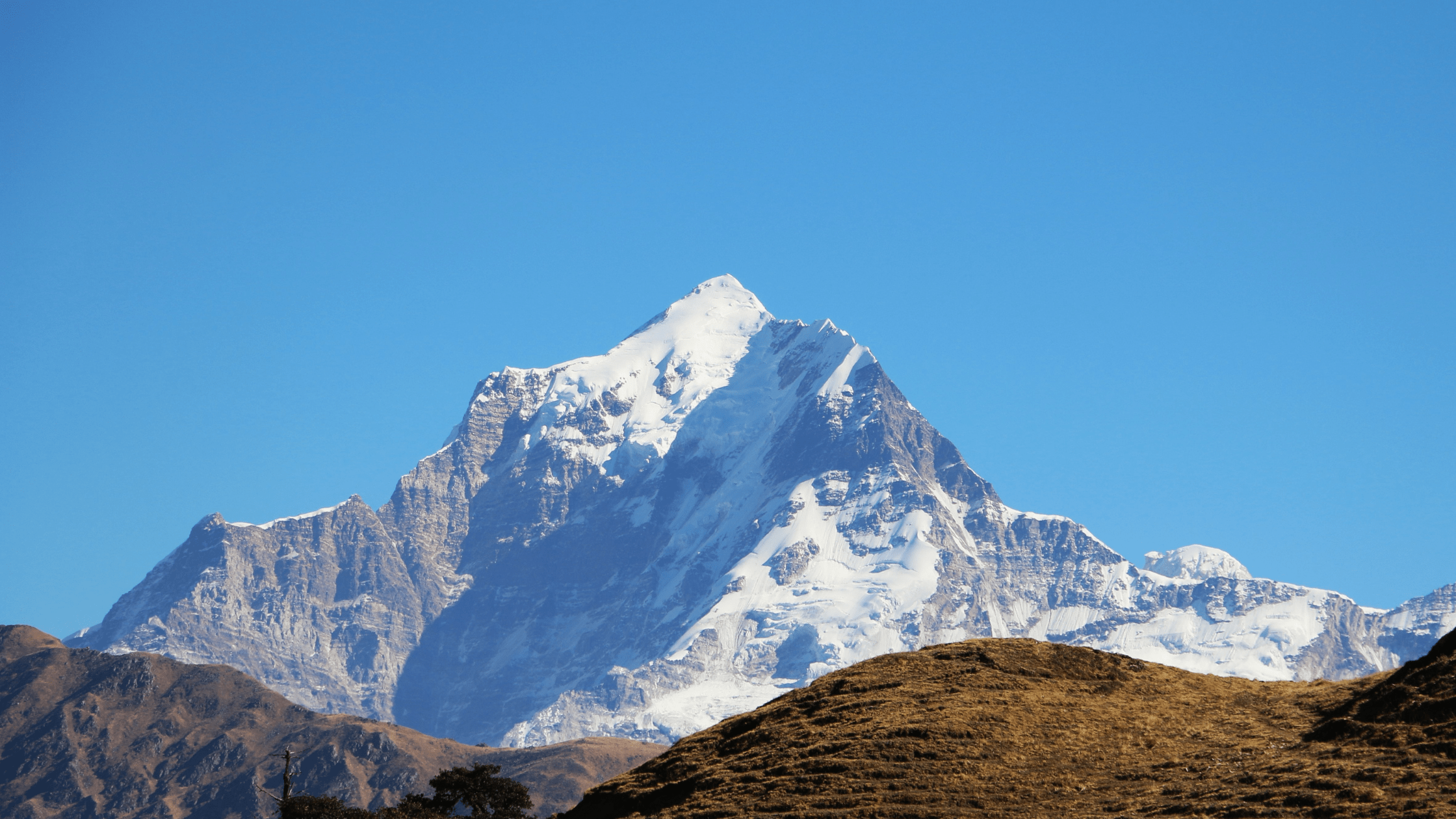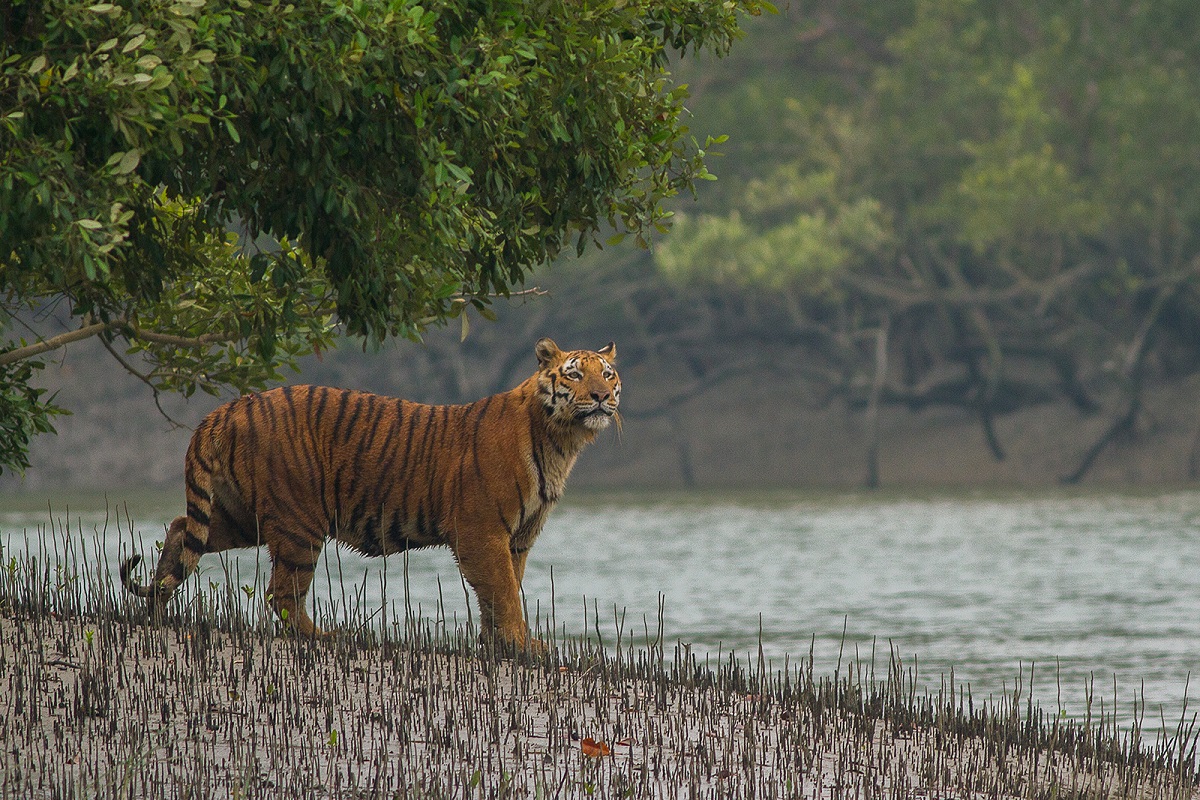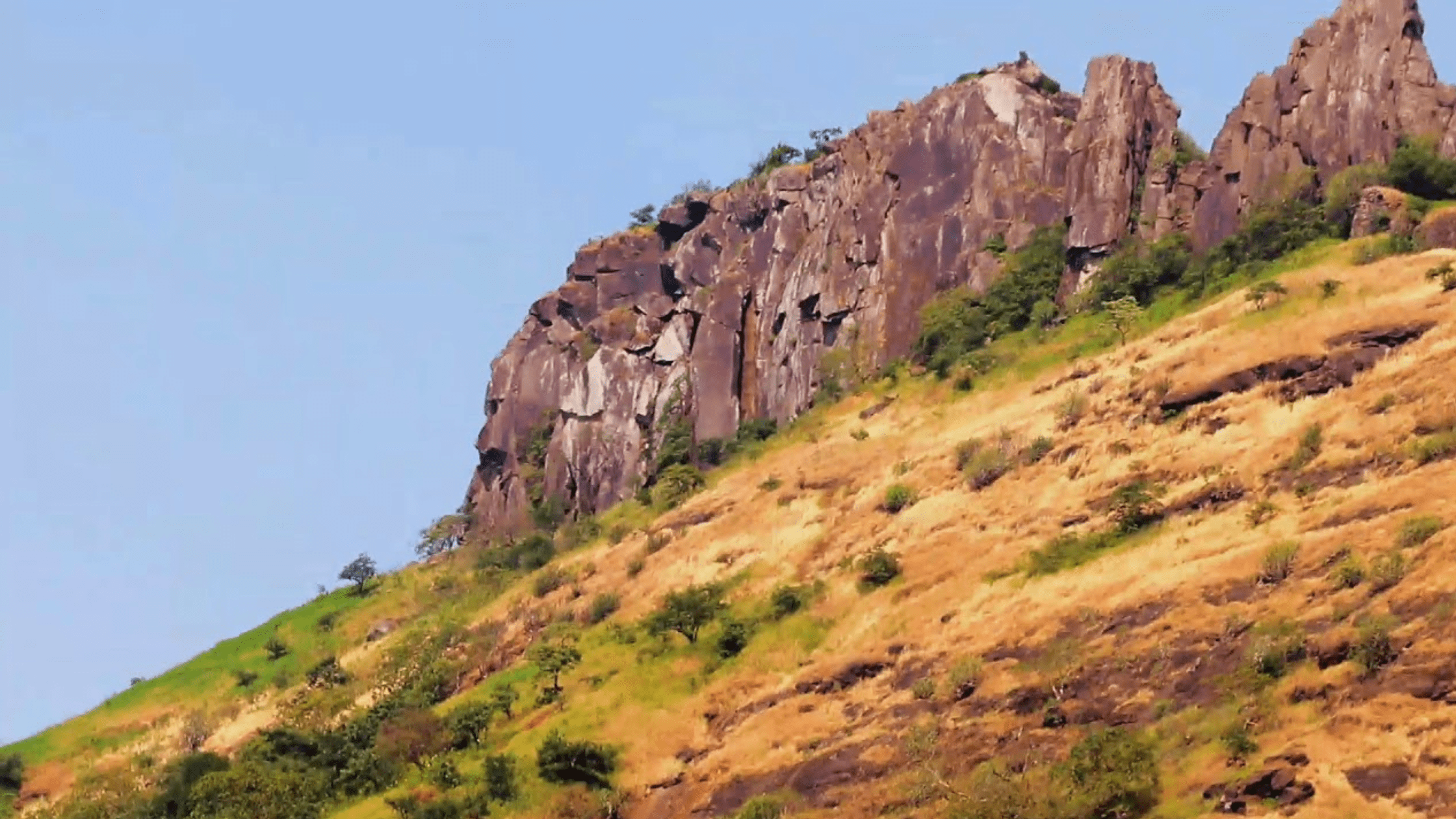Nanda Devi, ensconced in the rugged terrains of the Indian Himalayas, stands as a beacon of nature’s untouched beauty. When one mentions Nanda Devi, it evokes images of not just a majestic mountain peak but also of a rich tapestry of history, spirituality, and cultural significance.
The allure of Nanda Devi goes beyond its towering height and snow-clad visage. As the second highest mountain in India, Nanda Devi has seen countless sunrises that painted its slopes in hues of gold, and it has borne witness to time as ancient civilizations evolved around its base.
Nanda Devi’s Ethereal Aura
It’s said that mountains have stories, and Nanda Devi, in particular, has a saga that is as mystical as it is captivating. One cannot simply talk about Nanda Devi without delving into the spiritual reverence it commands.
The Spiritual Connection of Nanda Devi
Nanda Devi isn’t merely a geographical marvel; it’s a spiritual epicenter. Locals view Nanda Devi not just as a mountain, but as a divine entity. Many tales of old revolve around Nanda Devi, painting it as a protector and a benefactor. The mountain’s name itself translates to “Bliss-Giving Goddess,” shedding light on its divine significance in the region.
Nanda Devi in Modern Times
In today’s era, Nanda Devi continues to be a focal point of both pilgrimage and admiration. While the modern world races ahead, Nanda Devi remains timeless, with its slopes narrating tales of yore and its peaks challenging the limits of adventurers.
To truly understand Nanda Devi is to embark on a journey — a journey that traces the mountain’s geological formations, navigates its cultural significance, and delves into its spiritual essence. Whether you’re an adventurer, a historian, or someone seeking spiritual solace, Nanda Devi offers a unique blend of experiences that promise to leave an indelible mark on the soul.
Analyzing the multifaceted dimensions of Nanda Devi gives us a comprehensive insight into not just the mountain itself but also the intricate relationship between nature and Indian culture. As we continue to explore and learn more about Nanda Devi, it’s evident that its allure isn’t just in its towering presence but in the stories, beliefs, and emotions it evokes.
Nanda Devi’s Historical Backdrop
Exploring the historical richness of Nanda Devi opens a window to the myriad layers of traditions, myths, and reverence it embodies. The tapestry of Nanda Devi’s historical backdrop is woven with threads of spiritual narratives and cultural heritage intrinsic to the regions that surround it.
Religious Importance of Nanda Devi
Nanda Devi is more than a geographical landmark; it’s a celestial entity in the hearts of the people. Its presence is deeply engraved in the spiritual life of the locales. The air around Nanda Devi is thick with legends and myths, some of which have been passed down through generations, cementing its role as a divine figure. The devotion toward Nanda Devi is evident in the numerous pilgrimages undertaken by devotees who brave treacherous terrains to pay homage to this heavenly deity.
Nanda Devi: A Spiritual Beacon
The historical significance of Nanda Devi doesn’t end with spirituality; it’s a beacon illuminating the cultural diversity of India. The lore surrounding Nanda Devi narrates tales of divine interventions and celestial protections. These tales are integral to understanding the multifaceted personality of Nanda Devi. They are reflections of the diverse cultural elements and spiritual philosophies of the Indian subcontinent.
Nanda Devi’s Embodiment of Culture and Tradition
Nanda Devi is an embodiment of both historical richness and cultural integrity. Every nook and cranny of the regions surrounding Nanda Devi are saturated with traditions that have evolved around the reverence for the peak. The mountain is a living, breathing museum of cultural heritage, a treasure trove of historical gems that mirror the evolution of civilizations and spiritual beliefs over the centuries.
Impact of Nanda Devi on Local Civilizations
The civilizations that grew around Nanda Devi were significantly influenced by its spiritual and cultural essence. It acted as a compass directing the cultural developments and spiritual growth of the societies, intertwining their destinies with its mystical presence. The way local communities perceive spirituality, nature, and existence is deeply rooted in the historical narratives of Nanda Devi.
In conclusion, Nanda Devi stands as a historical and cultural monument, its peaks whispering tales of yore and its slopes cradling the spiritual ethos of the land. Analyzing the rich tapestry of Nanda Devi’s historical backdrop gives profound insights into the intertwined relationship of spirituality and culture within the Indian civilization. The exploration of Nanda Devi is akin to traversing the spiritual and cultural DNA of the regions, revealing the depth and breadth of India’s diverse heritage.
Geographical Marvel of Nanda Devi
When discussing the grandeur of the Indian Himalayas, Nanda Devi often emerges as a crowning jewel. Its elevation, marking 7,816 meters, positions Nanda Devi as an undeniable geographical marvel. This makes it the second-highest mountain in India, standing proudly in the Garhwal Himalayas, casting an ever-watchful eye over the region. Anyone gazing upon its majesty cannot help but feel a mix of awe and reverence.
Nanda Devi: An Ecological Wonderland
But the significance of Nanda Devi isn’t limited to its towering heights. Nestled within its shadows is the Nanda Devi National Park, an expanse recognized by UNESCO as a World Heritage Site. This distinction isn’t merely a title; it’s a testament to the park’s unparalleled ecological richness. The park surrounding Nanda Devi is a sanctuary for a multitude of species, offering a haven where flora and fauna thrive in pristine conditions. When one speaks of biodiversity in the Himalayan region, the Nanda Devi National Park stands out as a shining example, preserving the delicate balance of nature.
Cultural Significance of Nanda Devi
Venturing beyond its geographical and ecological importance, Nanda Devi holds a place of immense cultural significance. The Nanda Devi Raj Jat is an event that illuminates this aspect brilliantly. As a three-week-long pilgrimage and festival, it brings together countless devotees. However, it’s not just a spiritual journey. The Nanda Devi Raj Jat is a vibrant showcase of the Garhwali culture, presenting traditions, music, dance, and rituals that have been preserved for centuries.
Nanda Devi: The Intersection of Nature and Culture
The reverence for Nanda Devi, both as a natural marvel and a cultural emblem, is profound. The mountain seamlessly marries India’s rich cultural tapestry with its abundant natural treasures. It stands as a testament to the harmony that can exist between nature and the human spirit, reminding us of the deep ties that bind us to the landscapes we inhabit.
Analyzing Nanda Devi from a holistic perspective reveals layers of significance. It’s not just a mountain; it’s a symbol, an ecological guardian, and a cultural anchor. In the intricate weave of India’s geographical, ecological, and cultural narratives, the threads related to Nanda Devi are among the most vibrant and vital.
Trekking to Nanda Devi: An Adventurous Endeavor
Nanda Devi, with its majestic presence, has been a magnet for trekkers and adventurers from around the world. Despite the main summit being restricted, given its sacred nature, the trails surrounding Nanda Devi promise an exhilarating trekking experience. The pathways weaving around Nanda Devi are a blend of challenging terrains, interspersed with serene meadows, and offer panoramic views of the snow-clad peak. The journey towards the base camps around Nanda Devi is as rewarding as it is arduous, providing trekkers with an intimate view of the Himalayan grandeur. Alongside the physical challenges, trekking in the Nanda Devi region is also a spiritual journey, with every step echoing the mountain’s sacredness.
Diverse Flora and Fauna Around Nanda Devi
The environs of Nanda Devi aren’t just about snow and rugged terrains. It’s a pulsating ecosystem, alive with diverse flora and fauna. The region surrounding Nanda Devi acts as a sanctuary for several rare and endangered species. From the elusive snow leopards that prowl its higher reaches to the Himalayan black bears that amble through the forests, Nanda Devi’s ecosystem is a wildlife enthusiast’s dream. And then there’s the enchanting musk deer, a beautiful creature whose presence adds a touch of magic to the landscape.
It’s worth noting that the Nanda Devi biosphere isn’t just a habitat; it’s a complex, intertwined system where every organism, from the smallest flower to the mightiest predator, plays a vital role. This delicate balance has been preserved over millennia, making Nanda Devi not just a geographical wonder but an ecological treasure.
Nanda Devi: A Harmonious Symphony of Nature
Nanda Devi, in essence, is where nature sings its most harmonious song. Trekkers find solace in its trails, wildlife enthusiasts find wonder in its inhabitants, and spiritual seekers find tranquility in its sacred aura. The beauty of Nanda Devi lies in its ability to offer something for everyone. Whether one is searching for adventure, tranquility, or a deeper connection with nature, Nanda Devi stands as a testament to the timeless allure of the Himalayas. Analyzing Nanda Devi offers a deeper appreciation of the intricate dance between nature, spirituality, and adventure that the region epitomizes.
Challenges and Conservation at Nanda Devi
Nanda Devi, as awe-inspiring as it stands, isn’t exempt from the adversities that many natural wonders face in our world today. While its towering peaks and verdant landscapes continue to attract tourists and adventurers from across the globe, this influx has come with a cost. The delicate balance of the Nanda Devi ecosystem is increasingly under threat, facing environmental challenges that require immediate attention.
Human footprints have expanded, sometimes leaving behind trails of waste and disturbing the pristine environment. The flora and fauna, unique to the Nanda Devi region, often bear the brunt of this increased human activity. The rare species that have thrived in the shadows of Nanda Devi for centuries now face threats, both direct and indirect, from human encroachments and climate change.
However, recognizing these challenges, conservationists and authorities have taken steps to ensure Nanda Devi’s preservation. Striking a balance between promoting tourism, which is an essential economic driver, and maintaining ecological integrity is pivotal. Restrictions on certain treks, regular clean-up campaigns, and stringent regulations have been put in place. The hope is that Nanda Devi remains a source of inspiration not just for our generation but for countless ones to come.
In Conclusion: Nanda Devi’s Timeless Allure
At its core, Nanda Devi is a powerful reminder of India’s diverse and rich tapestry of natural beauty, spirituality, and cultural heritage. It isn’t just a mountain but a symbol—a beacon of nature’s resilience and a testament to India’s deep spiritual roots. This peak narrates tales of pilgrimages, adventures, and the age-old bond of humans with their natural surroundings. In our pursuit to explore and embrace Nanda Devi, it’s vital to remember the importance of sustainable interactions. Every visit, every trek should be an ode to its majesty and an affirmation of our commitment to preserving it for future generations. Analyzing the journey of Nanda Devi, from its geological birth to its current status, is an exercise in understanding India’s heart and soul. The harmonious coexistence of people, faith, and nature around Nanda Devi is an insightful lens through which one can appreciate the broader narratives of India.







